Creating a square piece of paper is the fundamental first step in the captivating world of origami, the ancient Japanese art of paper folding.
Origami has a unique ability to transform a simple sheet of paper into intricate three-dimensional sculptures, animals, and geometric wonders.
However, achieving that perfectly square foundation is essential.
In this guide, we’ll explore the precise steps and essential tips to convert a regular rectangular sheet into a pristine square, ensuring your origami creations begin with a strong and symmetrical base.
Whether you’re a beginner or an experienced paper-folding enthusiast, mastering this foundational skill opens the door to endless possibilities in the art of origami.
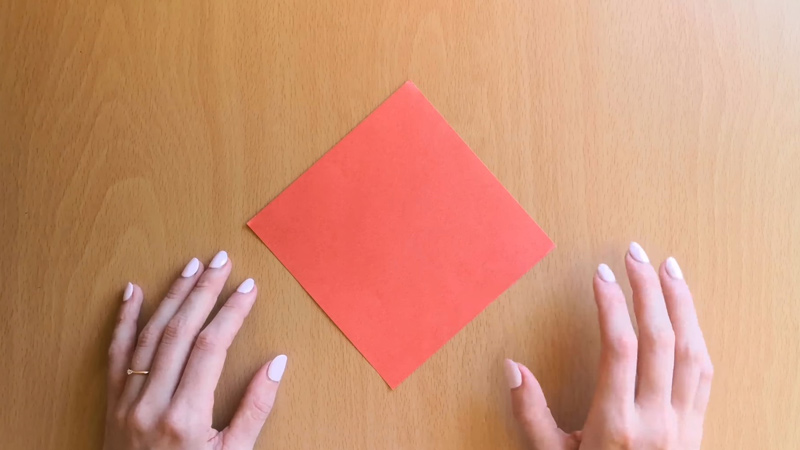
What Is Origami?
Origami is the ancient Japanese art of paper folding. Derived from the words “ori” (meaning “fold”) and “kami” (meaning “paper”), it involves transforming a flat sheet of paper into intricate three-dimensional shapes through precise folding techniques.
Traditionally, origami uses square-shaped paper, but it has evolved to incorporate various sizes and shapes.
This art form requires dexterity, patience, and an understanding of geometric principles.
Origami encompasses a vast array of designs, from simple animals and flowers to complex modular structures and abstract sculptures.
Beyond its aesthetic appeal, origami is valued for its therapeutic benefits, enhancing fine motor skills, concentration, and spatial awareness.
It transcends cultural boundaries, captivating enthusiasts worldwide and finding applications in fields like mathematics, engineering, and education.
How to Make a Square Piece of Paper for Origami?
Creating a square piece of paper for origami is an essential first step in many origami projects.
Here’s how you can make one from a regular rectangular sheet:
Materials Needed:
- A rectangular sheet of paper (letter-size or A4 paper works well).
- Scissors (if your paper isn’t already square).
Steps:
Select your paper

Choosing the right paper is crucial for a successful origami project.
While standard printer paper works well, you can also explore specialty origami paper that comes in various colors and patterns.
Landscape Orientation
Ensure that the longer edges of the rectangle are positioned at the top and bottom. This is the starting point for creating a square sheet.
Fold in Half Horizontally
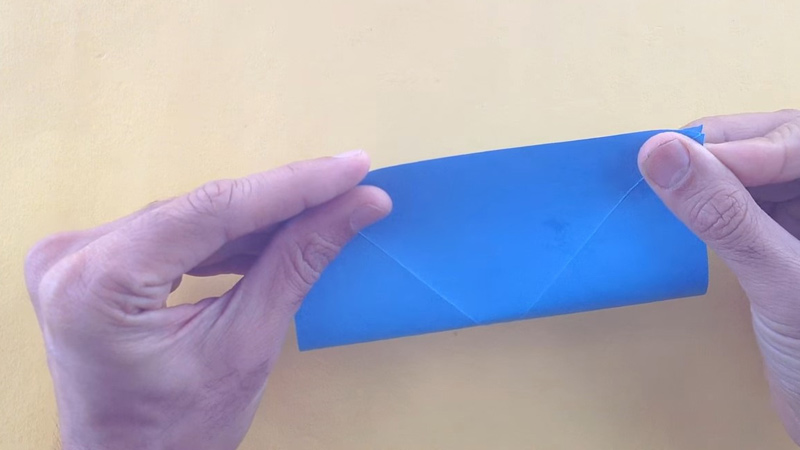
Take the top edge and fold it down towards the bottom edge.
Align the edges precisely, and use your fingers or a flat tool, like the back of a spoon, to make a sharp, even crease along the fold. This creates a clear, visible line for reference.
Trim the Excess

If you started with a standard 8.5×11 inch paper, you will now have a 5.5×8.5 inch rectangle with a fold along the middle.
To obtain a perfect square, measure 1 inch from the right edge and make a straight cut.
You can use scissors or a straight-edge cutter for this. Take your time to ensure a clean, straight cut.
Unfold and Trim (optional)
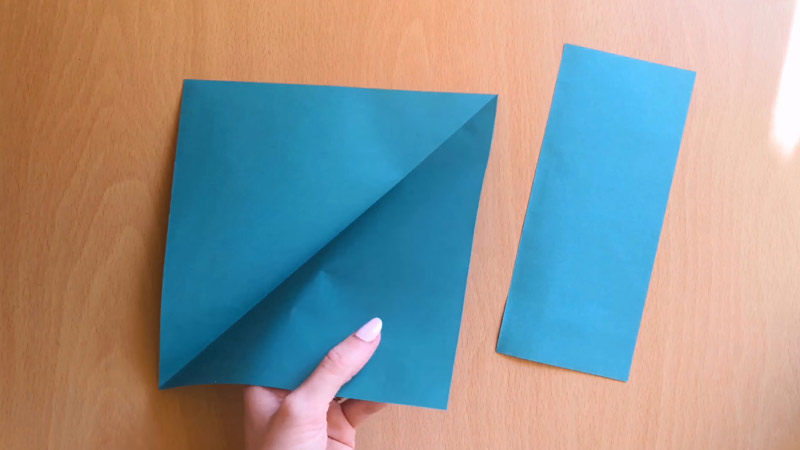
For those aiming for utmost precision, you can unfold the paper and trim along the edge you just folded.
This extra step ensures that your square is perfectly symmetrical and can be particularly useful for intricate origami designs.
Square Created
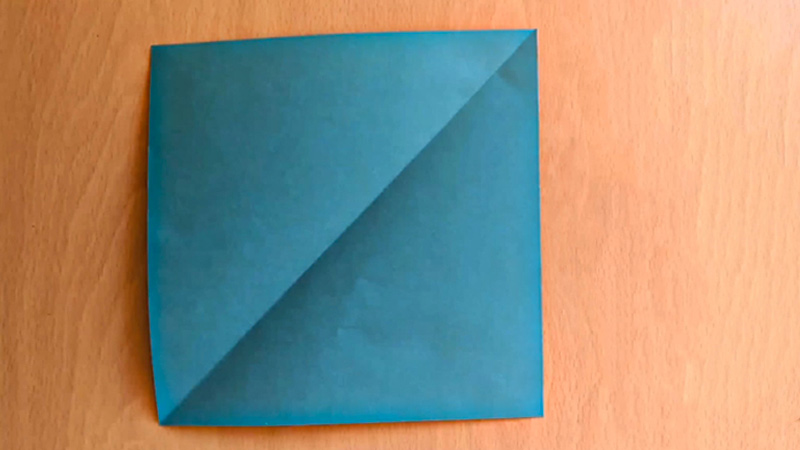
After completing these steps, you will have a square piece of paper, ready for your origami project! Take a moment to appreciate your handiwork and get ready to embark on your origami journey.
Alternative Methods to Create a Square Piece of Paper for Origami
There are various methods, including the diagonal fold technique and the “box fold” method, to create a square from a rectangular sheet.
Choose the one that works best for you and your specific project.
Here are a few alternative methods to create a square piece of paper for origami:
Diagonal Fold Technique
Start with a rectangular sheet. Fold one corner diagonally to meet the opposite edge, creating a triangle. Trim or tear off the excess paper along the folded edge. Unfold the triangle to reveal a square.
Box Fold Method:
Fold the rectangular sheet in half horizontally. Fold it again vertically to create a smaller rectangle. Open up the last fold, allowing the paper to pop into a square shape.
Double Fold Technique
Begin with a rectangular sheet. Fold it in half horizontally, creating a smaller rectangle.
Fold the smaller rectangle in half once more along the shorter edge. Open up the last fold to reveal a square.
Rotational Folding
Begin with a rectangular sheet. Fold it diagonally, creating a triangle. Rotate the triangle so that the longest edge is at the top.
Fold the top layer down to align with the bottom edge, forming a smaller triangle. Unfold the last fold to reveal a square.
How to Fix Mistakes if Your Square Origami Isn’t Perfect?
If your square origami paper isn’t perfect, don’t worry! Mistakes are part of the learning process in origami, and many imperfections can be corrected or improved.
Here are some steps to fix common mistakes:
Identify the Issue
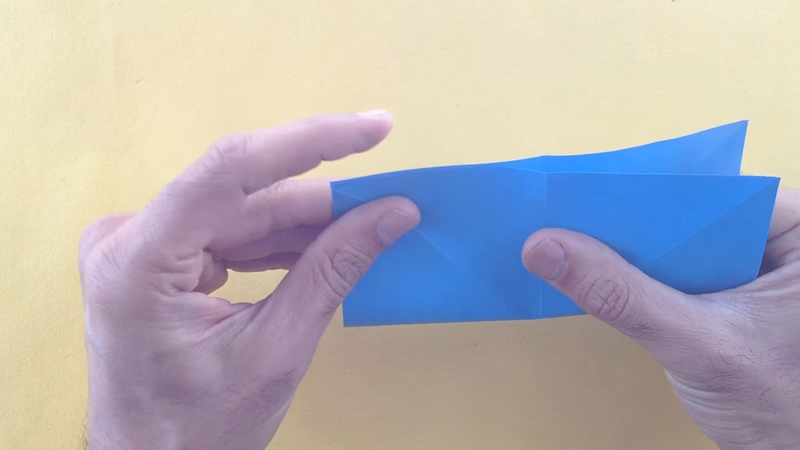
Take a moment to carefully inspect the origami piece. Look for any areas that appear uneven, or misaligned, or where a fold may not be sharp.
Identifying the specific problem will guide your corrective actions.
Unfold and Assess
Gently unfold the paper along the problematic area. Take your time to lay it flat and examine where the mistake occurred. This step provides a clear view of the issue.
Re-fold Carefully
Begin by correcting the fold that caused the problem. Pay close attention to the alignment of the paper and ensure that the new fold is precise. Use your fingers or a bone folder to make a clean crease.
Trim Excess Paper (if necessary)
If the square is still not satisfactory, and excess paper is contributing to the issue, consider carefully trimming it off.
Measure accurately before making any cuts. This step is especially relevant if you initially trimmed a rectangular sheet to create your square.
Re-crease and Adjust
Once you’ve made the necessary adjustments, re-crease the paper along the corrected lines.
Ensure that each fold is sharp and well-defined. A bone folder or flat edge can help create clean, crisp creases.
Repeat if Needed
Don’t hesitate to repeat the process as many times as necessary. Perseverance and patience are key in origami. Each attempt is a step towards improvement.
Practice Patience:
Remember that origami is an art form that requires practice. Mistakes are part of the learning process. Embrace them as opportunities to refine your skills.
Consider Starting Fresh
If the paper becomes too damaged or has too many corrections, it may be best to begin with a new sheet. Starting with a clean slate can lead to better results.
Learn from Mistakes
Take note of what caused the mistake. Understanding the source of the issue will help you avoid similar errors in future projects.
Seek Guidance (Optional)
If you’re struggling with a specific fold or technique, consider consulting origami tutorials or asking for advice from experienced practitioners. Their insights can be invaluable in overcoming challenges.
Precautions for Making a Square Piece of Paper for Origami
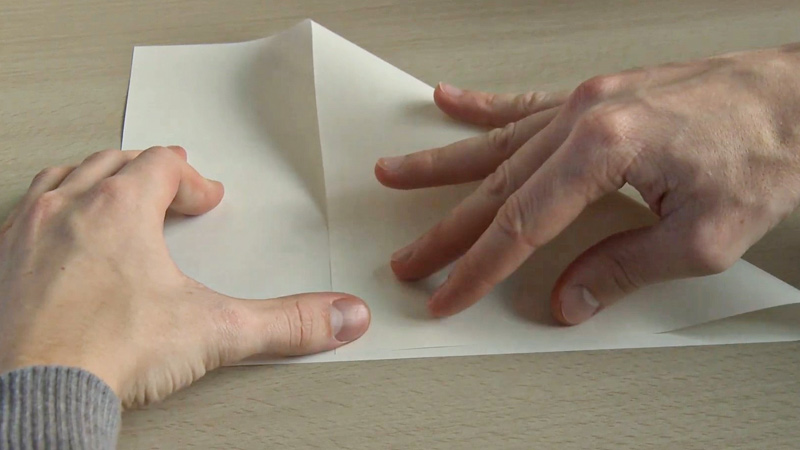
While making a square piece of paper for origami is a relatively safe activity, there are a few precautions you should consider to ensure a safe and enjoyable experience:
Sharp Objects
Use sharp tools like scissors or a straight-edge cutter with caution. Always cut away from yourself and keep your fingers clear of the cutting path.
Store sharp tools safely and out of reach of children.
Workspace
Ensure your workspace is clear of any clutter or obstructions. This prevents accidents caused by tripping or knocking objects onto your workspace.
Adequate lighting is important for clear visibility, reducing eye strain, and making precise folds.
Proper Tools
If you’re using a bone folder, ruler, or any other tool, make sure they are in good condition and have smooth, rounded edges. This reduces the risk of cuts or injuries.
Supervise Children
If kids are involved, make sure an adult is present to supervise and provide guidance. Instruct them on safe tool use and folding techniques.
Take Breaks
Engaging in origami for extended periods can strain your eyes and hands. Take short breaks to stretch and rest your eyes, especially during intricate projects.
Mindful Folding
Avoid rushing through the folding process. Carefully follow each step, ensuring each fold is precise. Rushing can lead to mistakes or accidental slips.
Allergies
If you have allergies or sensitivities, be mindful of the materials you’re using. Consider using hypoallergenic paper or taking precautions to minimize exposure.
FAQs
Why is a square piece of paper important for origami?
A square provides balanced proportions, allowing for more precise and symmetrical folds in origami designs.
Can I use any type of paper to make a square?
Ideally, start with rectangular paper like A4 or letter-sized. However, any paper can be trimmed to form a square shape.
What if I don’t have a ruler or bone folder?
While a ruler or bone folder can be helpful, you can use any straight edge (like a book) for folding, and your fingers for creasing.
Can I use pre-made square origami paper?
Absolutely! Pre-cut square paper is readily available and can save time, especially for beginners.
What if my first square isn’t perfect?
No worries! Practice makes perfect. Adjust your technique, be patient, and soon you’ll be creating precise squares effortlessly.
To Wrap Up
In mastering the art of creating a square piece of paper for origami, you’ve laid the cornerstone for endless creative possibilities.
The precision and care invested in this initial step set the stage for crafting intricate origami designs.
Remember, practice refines this skill, and with time, achieving a perfect square will become second nature.
Embrace the meditative quality of folding, the satisfaction of a crisp crease, and the joy of watching your creations take shape.
Origami offers a unique blend of artistic expression and mindful craftsmanship, and now, armed with this foundational knowledge, you’re poised to embark on a journey of imaginative paper transformation. Happy folding!
Leave a Reply